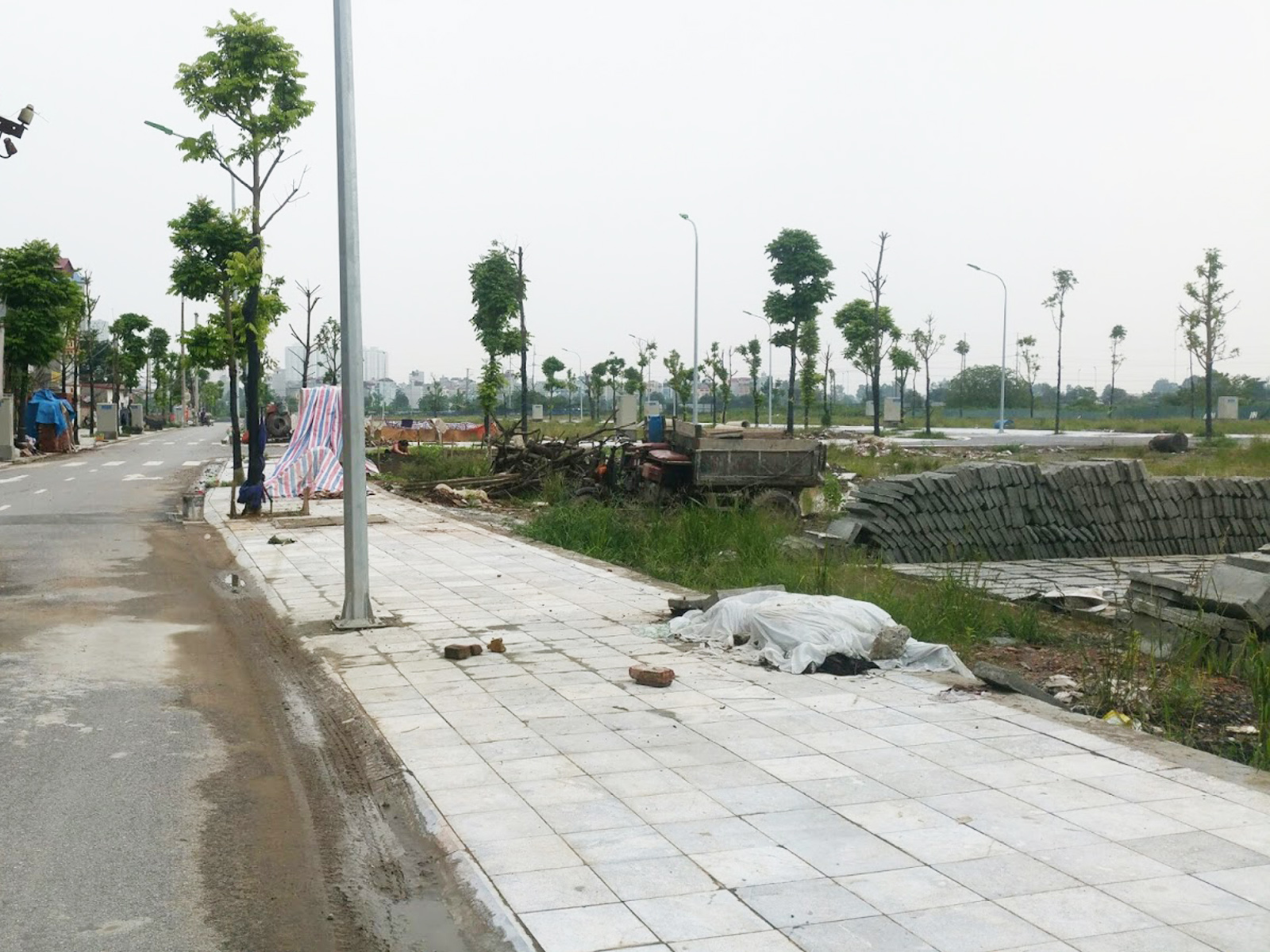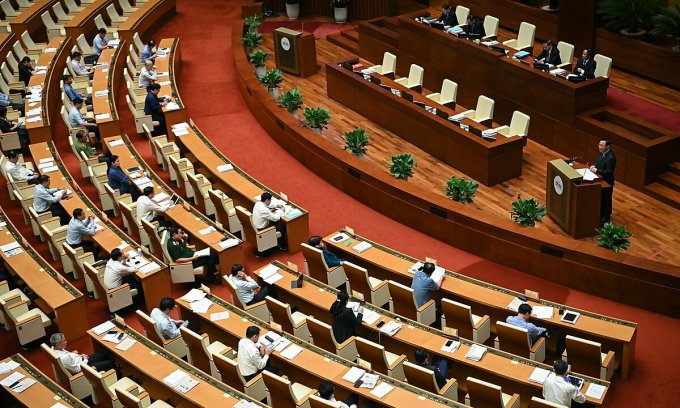How is the plan to use public land under Vietnam law?

Currently, the issue of land is always a matter of interest to many readers. For each different type of land, each locality will have different management methods with different regulations. So about the matter “How is the plan to use public land under Vietnam law?” Let’s find out with LSX in the article below.
Legal grounds
- Land Law 2013
What is public land?
– According to Clause 1, Article 132 of the 2013 Land Law, public land is understood as the agricultural land fund used for public purposes not exceeding 5% of the total area of land for growing annual crops, land for planting perennial crops, and land for farming. aquatic products to serve the local public needs.
At the same time, the establishment of the public land fund is based on the land fund, local characteristics and needs, and each commune, ward and township will be entitled to establish a public land fund according to regulations.
In addition, for places where the agricultural land fund used for public purposes exceeds 5%, the area beyond 5% shall be used for construction or compensation when other land is used for the construction of buildings. local public works;
To assign to households and individuals directly engaged in agricultural production or aquaculture in the locality that have not yet been allocated land or lack production land.
Can public land be issued with a red book?
According to Article 19 of Decree 43/2014/ND-CP stipulating cases in which the Certificate of land use rights and ownership of houses and land-attached assets is not granted, the following cases are not granted:
Organizations and communities that are allocated land by the State for management in the cases specified in Article 8 of the 2013 Land Law include:
The head of the organization is responsible for the management of land in the following cases:
+ Organizations assigned to manage public works, including roads, bridges, culverts, sidewalks, water supply systems, drainage systems, irrigation works, dikes and dams; squares, monuments, memorials;
+ Economic organizations assigned to manage land areas to implement investment projects in the form of build-transfer (BT) and other forms in accordance with the law on investment;
+ Organizations assigned to manage land with water surface of rivers and land with specialized water surface;
+ The organization assigned to manage the recovered land fund under a decision of a competent state agency.
+ Chairpersons of commune-level People’s Committees are responsible for the management of land used for public purposes assigned for management, unallocated land, and land not yet leased in the locality.
+ Presidents of People’s Committees of provinces and centrally run cities are responsible for the management of unused land on uninhabited islands in the locality.
+ The representative of the residential community is the person responsible for the land assigned to the residential community for management.
Persons who are managing and using agricultural land belonging to the public land fund of communes, wards or townships.
Land users who lease or sub-lease land, except for the case of leasing or sub-leasing land from investors building and trading infrastructure in industrial parks, industrial clusters, export processing zones, and technology parks high, economic zone.
– Persons contracted with land in agricultural and forestry farms, agricultural and forestry enterprises, protection forest management boards, and special-use forest management boards.
Current land users are not eligible for a certificate of land use rights and ownership of houses and other land-attached assets.
Land users who are eligible for a certificate of land use rights and ownership of houses and other land-attached assets but have received a notice or decision on land recovery from a competent state agency. .
– Organizations and commune-level People’s Committees that are allocated land by the State without land use levy for the purpose of constructing public works, including roads, water and petrol, oil and gas pipelines; power transmission lines, information transmission; outdoor entertainment area; Cemeteries and graveyards are not for commercial purposes.
Thus, people who are managing and using agricultural land belonging to the public land fund of communes, wards and townships will not be granted a certificate of land use right.
Source of public land formation
According to Clause 1, Article 132 of the Land Law 2013, the source of public land is as follows:
– It is established by each commune, ward and township based on the land fund, characteristics and needs of the locality.
– Agricultural land returned or donated by organizations, households or individuals with use rights to the State, reclaimed land or recovered agricultural land is the source to form or supplement the agricultural land fund for use for public purposes of communes, wards and townships.
Purpose of public land use
The purpose of using public land is specified in Clause 2, Article 132 of the Land Law 2013 as follows:
(1) Construction of public works of communes, wards and townships, including cultural, physical training and sports facilities, public entertainment and recreation, healthcare, education, markets, cemeteries, and graveyards and other public works as prescribed by the Provincial People’s Committee
(2) Compensation to persons whose land is used for the construction of public works specified in (1) of this section;
(3) Building houses of gratitude, houses of love.
How is the plan to use public land under Vietnam law?
The plan for using public land is different in each locality. Regulations related to public land are also different.
As in Son La,
Implementing the direction of Son La Provincial People’s Committee on the implementation of boundary determination, planting of boundary markers, measurement, cadastral mapping and land use boundary records in the province according to Decision No. 571/ QD-UBND dated March 23, 2013 on approval of Technical Design – Estimation for determination of land use boundary markers, measurement and mapping of cadastral maps at the scale of 1/10,000; prepare cadastral dossiers in service of granting land use right certificates to agricultural and forestry farms in Son La province. Up to now, the work items have been completed and certificates have been issued to the companies through marking the boundaries of agricultural and forestry farms.
On June 30, 2021, the Minister of Natural Resources and Environment issued Circular No. 09/2021/TT-BTNMT amending and supplementing a number of articles of the circulars detailing and guiding the implementation. Law on Land, effective from September 1, 2021. Accordingly, in Clause 1, Article 7 of Circular No. 09/2021/TT-BTNMT amending and supplementing Article 8 of Circular No. 07/2015/TT-BTNMT dated February 26, 2015 stipulating land use plans; make records of land use boundaries; cadastral surveying and mapping; determine the land rental price; Allocating land, leasing land and granting certificates of land use rights, ownership of houses and other land-attached assets with agricultural and forestry companies, providing:
“Article 8. Steps to handle the land fund handed over to the locality
1. The Department of Natural Resources and Environment shall assume the prime responsibility for organizing the measurement and determination of the land fund to be handed over to the locality according to the scheme or plan for arrangement, renewal and development of the agricultural and forestry company, and the plan for use land of agricultural and forestry companies approved by competent state agencies.
2. The Department of Natural Resources and Environment compiles a land recovery dossier and submits it to the provincial-level People’s Committee for signing the decision on land recovery.
3. The district-level People’s Committees shall assist the provincial-level People’s Committees in formulating land use plans for the land fund, handing over to localities within their administrative boundaries for management, and sending them to the Services of Natural Resources and Environment. Environment.
4. The natural resources and environment agency shall make a dossier and submit it to the People’s Committee of the competent level to decide on land allocation, land lease, and recognition of land use rights to current users according to the approved land use plan. Browser; sign land lease contract in case of land lease; adjust the cadastral map (if any) to issue the Certificate, hand over the land in the field and update the cadastral records and the land database.
5. Provincial-level People’s Committees shall approve the contents of the use plan for the land fund handed over to the locality in accordance with the actual management and use of land in the locality and ensure the following principles:
a) Conformity with master plans and plans on land use already approved by competent agencies;
b) Comply with the provisions of the land law on classification of land, land users, forms of land use, land use term, land use limit, conditions for recognition of land use rights ;
c) To settle the land use needs of the priority subjects according to the provisions of Article 46 of the Government’s Decree No. 43/2014/ND-CP dated May 15, 2014 detailing the implementation of a number of articles of the Government’s Decree No. of the Land Law and the Government’s Decree No. 118/2014/ND-CP dated May 15, 2014 regulating the arrangement, renovation and development, and improving the operational efficiency of agricultural and forestry companies;
d) The land allocation, land lease, and recognition of land use rights shall be done publicly, democratically, objectively, honestly and equally, protecting the legitimate rights and interests of the concerned persons.”
Based on the above regulations, the Department of Natural Resources and Environment has issued guidance on making land use plans for the area of agricultural and forestry companies handing over to the locality in 6 districts: Muong La, Phu Yen, Mai Son, Van Ho, Moc Chau, Song Ma, Sop Cop. Accordingly, the People’s Committees of districts have been proposed to implement the following contents:
1. Make district-level land use planning for the period 2021-2030 for the land area returned by agricultural and forestry companies to the districts. Accordingly, it is expected to allocate land use norms for inclusion in the land use planning according to the needs of each commune in the district.
2. Make a land use plan for the land area returned by the agricultural and forestry companies to the districts (according to the attached outline form), and send it to the Department of Natural Resources and Environment for appraisal and submission to the Provincial People’s Committee for approval.
3. After the plan is approved, carry out the plan for land allocation, land lease or recognition of land use rights, issue a certificate of land use right to the land user according to the provisions of law for the land users.
For Hue, the introduction of land use plans also has many points of attention.
Services of LSX
Prestigious professional services: Firstly, the team of consultants and consultants for many years in the field of civil status, and customer support.
On-time: Certainly, with the motto “Get your lawyer right at your fingertips”, we ensure the service always performs on time. The rights and interests of customers always come first.
Cost: Besides, LSX’s service costs are highly competitive; depending on the nature of the particular case. So, we want our guests to have the best possible service experience. Therefore, costs which guaranteed to be the most suitable and economical for customers.
Confidentiality of client information: Finally, all brand information of client LSX will be 100% confidential.
Please contact us immediately if you have any questions about “How is the plan to use public land under Vietnam law?”
Contact LSX
Finally, hope this article is useful for you to answer the question about “How is the plan to use public land under Vietnam law?” If you need any further information, please contact LSX Law firm: at +84846175333 or Email: [email protected]
Please see more
- Can adjacent land be built under Vietnam law?
- Sequence of recovering encroached land in Vietnam
- Cases of granting land use right certificates in Vietnam
Frequently asked questions
According to regulations, public land is managed, leased and used by the commune-level People’s Committees for public purposes. Therefore, people who rent land are only allowed to do aquaculture and agricultural production and are not allowed to build houses.
If users violate and deliberately build houses on public land, they will have to receive a fine of from VND 1,000,000 to VND 2,000,000 and have to restore the land to its original condition as prescribed by law. In case of failure to comply with regulations, violators will be forced to demolish the house and bear all costs for demolition.
In addition, according to Article 174 of the 2015 Criminal Law, amended and supplemented in 2017, the transferor of public land can be prosecuted for penal liability for the crime of “fraudulent appropriation of property”.
For the management of public land according to Clause 4, Article 132 of the Land Law 2013, the People’s Committee of the commune where the land is located shall manage and use it according to the master plan and plan on land use approved by a
According to Clause 3, Article 132 of the Land Law 2013, the lease of public land is as follows:
For the unused land for the purposes specified in Section 4, the People’s Committees of communes shall lease it to local households and individuals for agricultural production and aquaculture in the form of auction to give rent. The land use term for each lease must not exceed 5 years.
The proceeds from the lease of agricultural land for public purposes must be remitted to the state budget managed by the commune-level People’s Committees and can only be used for the public needs of the commune, ward or township. according to regulations of the Law.
Conclusion: So the above is How is the plan to use public land under Vietnam law?. Hopefully with this article can help you in life, please always follow and read our good articles on the website: lsxlawfirm.com




